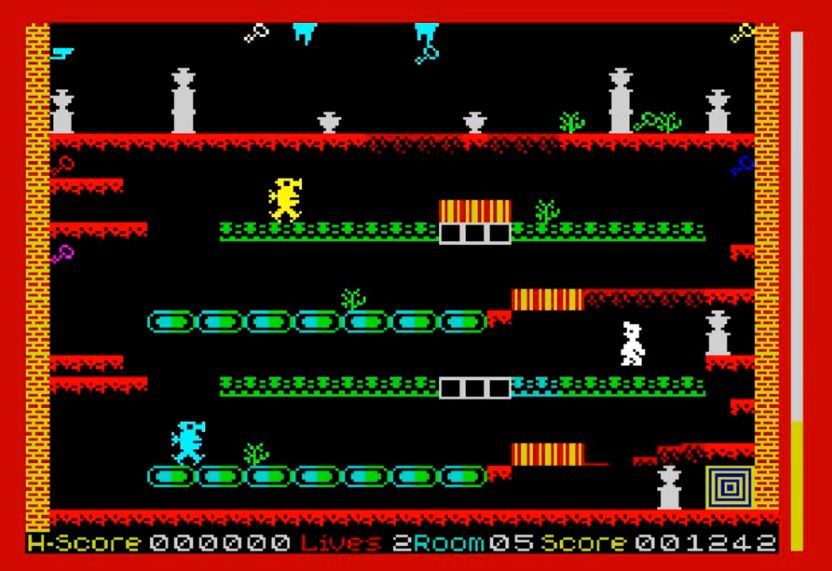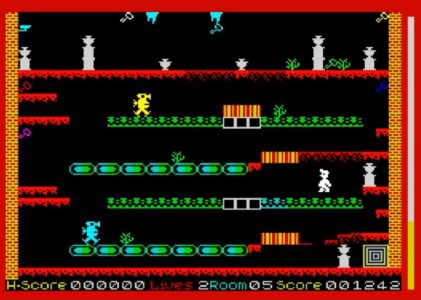Metadescription: Dive into the world of Manic Miner, a legendary platformer that took the gaming world by storm. Discover its genre, gameplay mechanics, reviews, and its lasting cultural impact. Explore its sequels and find examples of similar games that owe their success to this iconic title.
Introduction
In the early 1980s, a little game called Manic Miner was released, forever changing the landscape of the gaming industry. Developed by Matthew Smith and published by Bug-Byte Software Ltd., this groundbreaking platformer quickly became a massive hit among gamers worldwide. With its challenging gameplay, innovative mechanics, and charming visuals, Manic Miner not only captured the hearts of players but also laid the foundation for future platforming adventures. In this article, we will delve into the history, gameplay, key features, reviews, cultural impact, sequels, and other games inspired by the legendary Manic Miner.
Genre and Platforms
Genre: Platformer
Manic Miner belongs to the platformer genre, a category of video games that revolves around controlling a character who must navigate various levels filled with obstacles, enemies, and hazards. The main objective is to reach the end of each stage while collecting valuable items and power-ups. Platformers are known for their focus on precise jumping, timing, and quick reflexes, making them both challenging and immensely rewarding.
Platforms:
Manic Miner originally debuted on the ZX Spectrum, a popular home computer system in the 1980s. It later saw releases on various other platforms, further extending its reach and popularity:
- Commodore 64: The game was ported to this iconic 8-bit computer, gaining a new set of fans.
- Amstrad CPC: Another successful port brought the mining adventures to Amstrad’s line of computers.
- Atari 8-bit: Owners of Atari computers were also able to enjoy the excitement of Manic Miner.
- BBC Micro: Acorn Computers’ platform was also graced with a version of this classic title.
- Dragon 32/64: The Dragon computers joined the list of platforms where Manic Miner was made available.
Thanks to its multi-platform releases, Manic Miner reached a broad audience, making it a memorable part of many gamers’ childhoods.
Gameplay
Manic Miner follows the adventures of its protagonist, Miner Willy, an intrepid miner with a penchant for danger. The game consists of 20 challenging levels known as “screens,” each featuring a unique layout and set of obstacles. Willy’s objective is to collect all the flashing items scattered throughout the screen, such as keys, pots of gold, and other treasures, to progress to the next level. However, the task is far from easy, as each screen is packed with deadly hazards that can end Willy’s journey in an instant.
To add to the challenge, Willy is equipped with limited oxygen supply, making it crucial for players to complete each screen swiftly. Failing to collect all the items or running out of oxygen results in the loss of a life, and once all lives are exhausted, players must restart from the beginning.
Key Gameplay Features
1. Precision Platforming: Manic Miner’s success largely stems from its precise and responsive controls, enabling players to execute pixel-perfect jumps and maneuvers. The game demands impeccable timing and dexterity to traverse the perilous screens successfully.
2. Unique Level Design: Each screen in Manic Miner introduces new obstacles and arrangements, keeping the gameplay fresh and engaging throughout. From moving platforms to disappearing floors, the diversity of challenges ensures players never experience monotony.
3. Time Pressure and Oxygen Management: The oxygen meter adds an extra layer of urgency, urging players to maintain a fast pace while collecting items. This feature heightens the tension and adrenaline, making Manic Miner an exhilarating experience.
4. Easter Eggs and Secrets: Manic Miner is renowned for its hidden Easter eggs and secret passages, rewarding curious and adventurous players with surprises and shortcuts.
5. Charming Graphics and Sound: Despite the limitations of early 8-bit systems, Manic Miner’s graphics were vibrant and distinctive. The game’s catchy, chiptune-inspired soundtrack also became iconic among fans.
Reviews and Cultural Impact
Upon its release, Manic Miner garnered widespread acclaim from critics and players alike. The combination of challenging gameplay, innovative mechanics, and charming visuals struck a chord with gamers, elevating it to classic status.
ZX Spectrum Magazine praised the game’s addictive nature, commending its level design and character design. The magazine highlighted the game’s difficulty as a significant factor in its appeal, stating that it provided a satisfying sense of accomplishment upon completion.
Crash Magazine, another prominent publication at the time, awarded Manic Miner a near-perfect score, lauding its groundbreaking gameplay mechanics, well-designed levels, and the uniqueness of the protagonist, Miner Willy.
The success of Manic Miner led to numerous unofficial clones and fan-made levels, showing its significant cultural impact on the gaming community. Miner Willy became an enduring character in the gaming world, inspiring references in other games, fan art, and even music.
Sequels
Following the immense success of Manic Miner, Matthew Smith and Bug-Byte Software Ltd. released a sequel in 1984 titled “Jet Set Willy.” This sequel continued the adventures of Miner Willy, now tasked with tidying up his mansion after throwing a wild party for his mining colleagues. Jet Set Willy maintained the same addictive platforming gameplay while introducing new challenges and an expanded game world.
The game’s reception was mixed, with some praising its ambitious scope and level variety, while others criticized its high difficulty and occasional glitches. Nevertheless, Jet Set Willy remains a noteworthy continuation of Miner Willy’s adventures and a classic in its own right.
Similar Games
Manic Miner’s groundbreaking gameplay and critical acclaim paved the way for numerous platformers that drew inspiration from its mechanics and design. Some of the notable examples of games influenced by Manic Miner include:
1. Jetpac (1983): Developed by Ultimate Play the Game (now known as Rare), Jetpac is a sci-fi themed shooter-platformer that shares similarities with Manic Miner in its precise controls, challenging gameplay, and level design.
2. Monty Mole Series: The Monty Mole series, developed by Peter Harrap and Gremlin Graphics, features platformers with a similar focus on precise jumping and quirky characters. Titles like “Monty on the Run” and “Auf Wiedersehen Monty” showcase the influence of Manic Miner’s gameplay.
3. Rick Dangerous (1989): Rick Dangerous, developed by Core Design, is a platformer that mirrors Manic Miner’s demanding gameplay and unique level design. Players control the adventurous Rick as he embarks on dangerous expeditions and must navigate treacherous terrain.
4. Chuckie Egg (1983): Nigel Alderton’s Chuckie Egg shares the same intense platforming action, presenting players with challenging levels and a protagonist (Hen House Harry) on a quest to collect eggs.
Conclusion
Manic Miner remains a landmark title in the history of video games, with its innovative platforming gameplay, challenging levels, and enduring cultural impact. As a pioneer of the genre, it laid the foundation for future platformers, inspiring countless developers to create their own challenging and captivating adventures. Even today, its influence can be seen in modern games, ensuring that the legacy of Miner Willy continues to thrive. So, why not grab a joystick or a controller and venture into the mines to relive the classic gaming experience that is Manic Miner? Happy mining!

